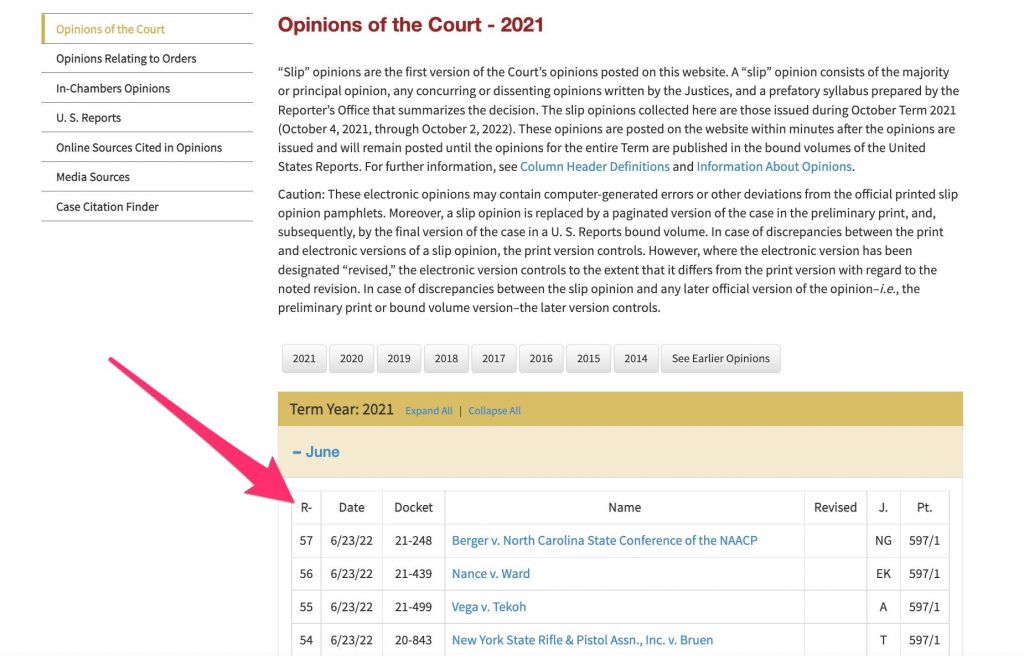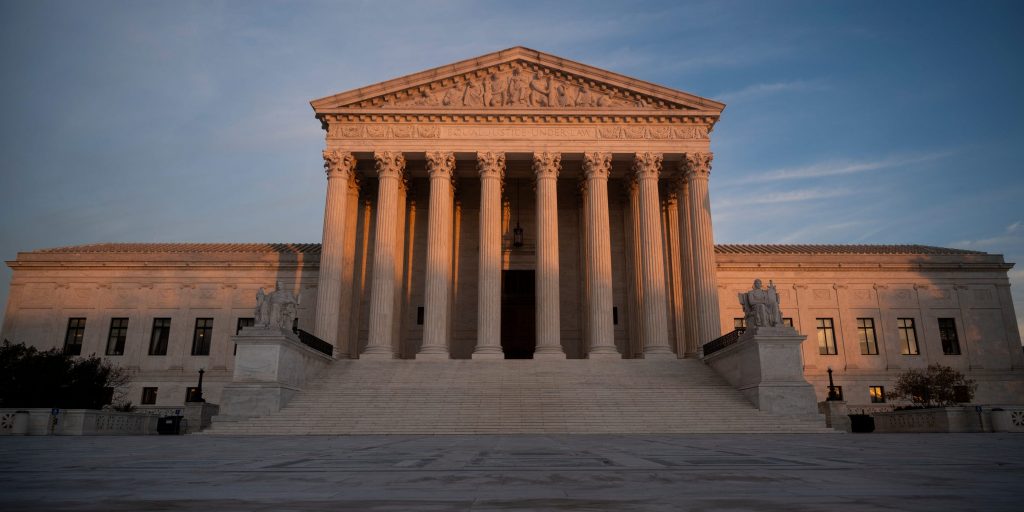- The Supreme Court is releasing major decisions before it wraps up its term.
- The biggest decision to come involves abortion rights.
- Here's a guide on how to follow the Supreme Court rulings.
In typical Supreme Court fashion, the nine justices are releasing a slew of monumental rulings before the term wraps up and they recess for the summer.
Each year, the nation's highest court reviews around 70 to 80 cases out of a pool of more than 7,000 petitions. The court usually saves the most high-profile, weighty, and politically contentious decisions for the end of the term, eyeing a late June or early July deadline.
Just this week, the court handed down major decisions that deal with religion and guns. The court's 6-3 conservative majority, in each of the respective cases, expanded religious freedoms and gun rights.
There are still nine cases for the court to issue an opinion on. The most consequential of the bunch — and the biggest challenge of this entire blockbuster term — involves abortion rights. The state of Mississippi has asked the Supreme Court to uphold a ban on abortions after 15 weeks of pregnancy and overturn Roe v. Wade, the landmark ruling that legalized abortion nationwide almost 50 years ago.
Other significant remaining disputes concern climate, immigration and religion.
Here's how to follow the Supreme Court as it issues its final rulings of the term:
When are these rulings expected?
The homepage of the Supreme Court website has a calendar that marks the days opinions come down. The calendar is frequently updated as the term goes on. The next decision day, according to the calendar, is Friday.
However, the court does not preview the cases it's going to issues opinions on. That means it's unknown exactly when these final decisions will be released, but the expectation is before early July.
Where can I find the Supreme Court rulings?
On decision day, the Supreme Court posts its rulings to its web page titled "Opinions of the Court."
Beginning at 10 a.m. ET, court watchers refresh the site to see the latest Supreme Court ruling published. SCOTUSblog, an independent law blog helmed by legal experts, usually hosts a live feed on its website on decision days and posts the rulings in near real-time along with some expert analysis.
The court issues rulings in 10-minute intervals. But the court does not announce how many rulings it will release ahead of time. Court watchers have relied on a technique to determine whether the court will hand down more than one ruling in a day — looking for the "R" number.
To the left of the opinion is a column titled "R" that lists the chronological number of rulings published that day. When the court posts an opinion without an "R" number, that usually means another opinion is coming. When the "R" number is filled out, that's an indication that it's the final ruling of the day.

How do I learn more about the case and its ruling?
The Supreme Court's website has several pages to find further information about a particular case, its oral arguments, and the legal briefs associated with it.
On the opinion page, Supreme Court rulings are available to download and read in full. An opinion typically consists of three main parts: the syllabus, the majority opinion, and concurring and dissenting opinions.
The opinion starts with the syllabus, which lays out the facts of the case and summarizes it.
Next comes the majority opinion, which is the court's decision in the case. It's authored by one justice, whose name appears at the top of the opinion, and that justice provides an explanation for the court's decision.
After that is any concurring opinions, which happens when the justices don't agree on everything. Justices who support the main ruling, but have a different reasoning for their support, usually explain that in a concurring opinion.
At the end of the document are any dissenting opinions. This is an opinion written by a justice who does not support the decision and voted against it. In the opinion, the justice explains their disagreement, to which other justices can sign on to.

